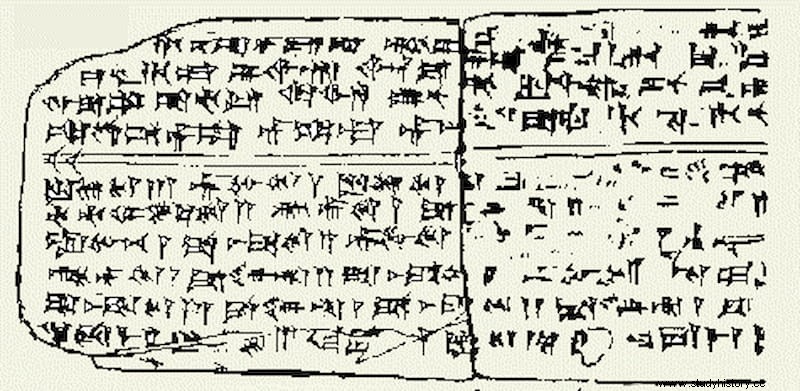In historical films there is usually no lack of costumbrista scenes in which great ritual ceremonies or parties are seen in the house of a wealthy character, with exotic dancers and musicians interpreting alleged melodies of the time . The truth is that these are pieces made by the composer of the soundtrack and they rarely reflect reality.
And it is that archaeologists and historians do not have it at all easy to know how the music sounded millennia ago, since the staff and the notes as such did not begin to be used until the Middle Ages, adopting more or less definitive features already in the Renaissance. It is not that there were no systems before, because in fact they have existed since Ancient Greece , but they are difficult to fully understand.

If we go back even further in time, things get even more complicated, depending on the interpretation of the investigator on duty. Can you imagine what music was like in ancient Mesopotamia , for instance? Well after arduous efforts we can get a rough idea. In the middle of the 20th century several clay tablets were found with cuneiform writing corresponding to the city of Ugarit (Ras Samra), located on the Mediterranean coast of present-day Syria, a strategic crossroads for the Egyptian and Hittite empires.
They were written in the Hurrian language. and, when translated, they turned out to be the oldest piece of music ever discovered. It was a religious hymn in honor of the goddess Nikkal which was part of a larger work, composed of thirty-six songs (now lost) and that chronologically was three and a half millennia old, dating back to around the year 1400 BC . Experts immediately got to work on it, trying to figure out how to apply it in practice. The first version was proposed in 1972 by Anne Draffkorn Kilmer , professor of Assyriology at the University of California, and since then other proposals have been succeeding.
An article about it published in the journal Archeologia Musicalis in 1988 he explained that this hymn uses a diatonic scale of seven notes . A revolutionary idea that would demonstrate that the concept of harmony already existed in those remote times. , as opposed to the majority opinion until then among the experts, who believed that harmony did not exist until the Greek civilization (harmony being understood as the organization of chords).
But going to the practical, what would it sound like the composition in question? Is there a way to listen to it? Well, it seems that yes. Although the ancient Mesopotamians did not have keyboards, they are obviously useful instruments to translate what is written on paper (or clay, in this case) into sound, and then pass it on to a more authentic instrument. Of course, compensating for certain shortcomings with hypotheses:what is impossible to determine is the rhythm .
To the piece, baptized Hymn of Ugarit , Hymn to Nikkal or Hymn number six , and to which four possible authors are attributed according to other found tablets, sometimes it is performed with a lyre and others with a flute, which were the most common instruments in the region, although in the lower part, where the musical text is (in the upper , the letter), there are indications to play rather with sammûm , a kind of harp that had nine strings.
